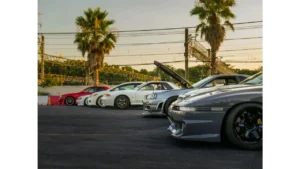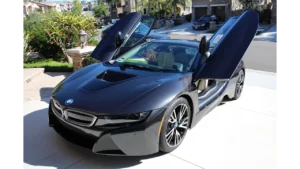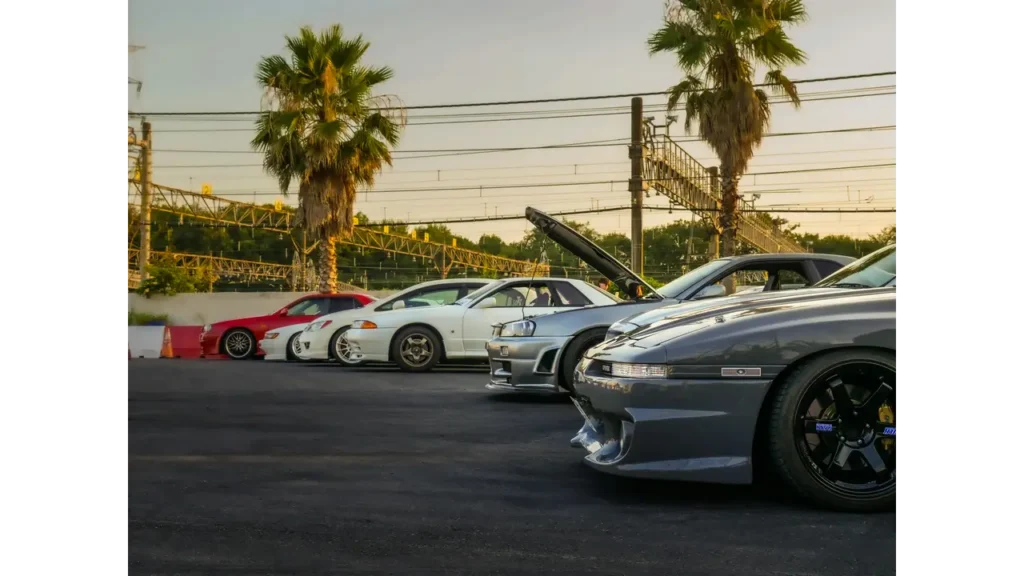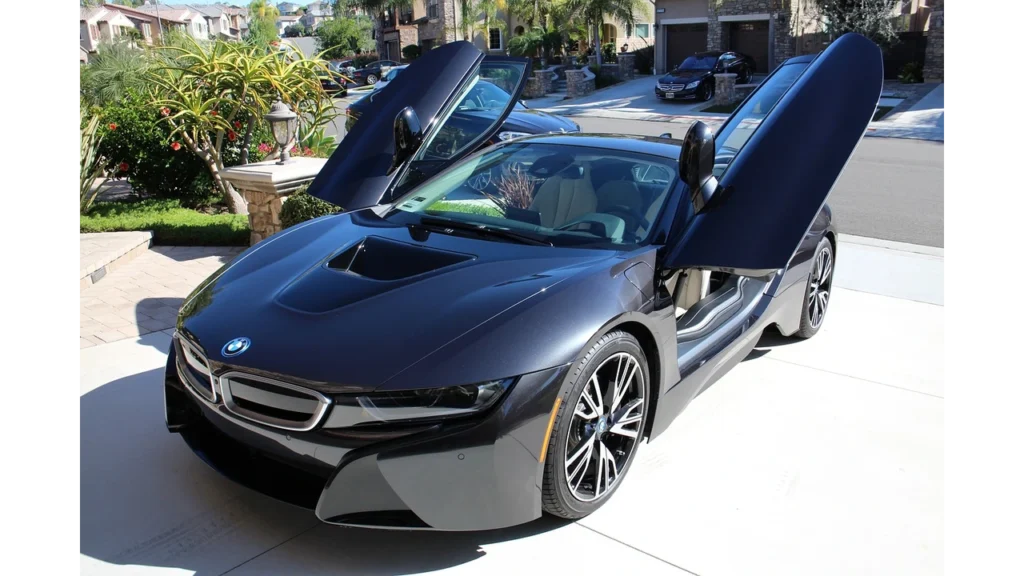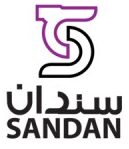Introduction – Why 4×4 Matters for Oman’s Terrain
Oman’s driving landscape is defined by extremes. From soft desert dunes that stretch endlessly in the Wahiba Sands to steep rocky paths through Jebel Akhdar, every route demands something different from a vehicle. A standard two-wheel drive may handle Muscat’s smooth expressways, but once the tarmac ends, traction, torque distribution, and ground clearance become essential. This is where true 4×4 capability—not just an all-wheel system—makes a decisive difference.
In Oman, a used 4×4 is more than a lifestyle choice; it’s a necessity for many drivers who live between urban and off-road environments. The ability to engage four-wheel drive on demand allows safe navigation across deep sand or gravel-strewn inclines. Vehicles such as the Toyota Land Cruiser, Nissan Patrol, and Mitsubishi Pajero dominate the used market because they combine comfort with endurance, built for both desert temperatures and mountain strain.
However, not every 4×4 on sale can withstand the rigors of Omani terrain. Heat exposure, salt air near the coast, and years of sand driving can wear down mechanical systems. Prospective buyers must understand what defines off-road readiness: a functioning transfer case, intact differential locks, robust suspension, and reliable underbody protection. Each of these elements determines how well a vehicle will perform beyond paved roads.
Choosing a used 4×4 in Oman isn’t just about power or prestige. It’s about aligning a vehicle’s capabilities with the local environment. A buyer who plans weekend dune trips needs a different setup than someone using a 4×4 for wadi crossings or remote job sites. Recognizing this difference early helps narrow the search and avoid mechanical surprises later.
Key Takeaways (TLDR)
- Oman’s varied terrain makes a true 4×4 essential, not optional.
- Core systems to evaluate include the transfer case, differentials, and suspension.
- Used 4×4s often show wear from desert and mountain driving; inspection is crucial.
- Terrain type—dunes, wadis, or mountains—should guide model choice.
- Established dealers like Sandan provide structured inspections and verified listings suitable for Omani conditions.
Table of Contents
Understanding the Used-Car Market for 4×4 Vehicles in Oman
The used 4×4 market in Oman remains one of the strongest in the Gulf due to high local demand and a steady inflow of GCC-spec vehicles. Buyers often prioritize rugged reliability and serviceability over luxury features. Toyota, Nissan, Mitsubishi, Ford, and Jeep lead sales because their parts are widely available and mechanics across the country are familiar with their systems.
Pricing depends heavily on age, mileage, and terrain history. A ten-year-old Land Cruiser that has spent its life in the city can command a higher price than a newer one that’s been driven extensively in dunes. Desert usage accelerates component fatigue—axles, seals, and suspension bushings degrade faster due to constant vibration and sand intrusion. Buyers who evaluate history reports and mechanical condition often gain significant leverage during negotiation.
Import status also affects valuation. Non-GCC imports may lack proper cooling systems or air filters suited to desert climates. They can perform well in cooler countries but struggle under Omani heat. Therefore, verifying that a used 4×4 is GCC-spec is a basic yet vital step. Documentation should confirm where the vehicle was first sold and serviced.
Resale value varies by brand and reputation. The Land Cruiser and Patrol, for instance, retain value because of their proven endurance on Omani terrain. Meanwhile, European SUVs often depreciate faster, partly due to higher maintenance costs and limited parts supply. Understanding these market dynamics enables buyers to choose vehicles that retain long-term worth, especially when future resale is a consideration.
Buying through structured platforms like Sandan offers added security. Their listings often include mechanical inspection reports and transparent histories, allowing buyers to compare vehicles confidently. In a market where used 4×4s may differ greatly in condition despite similar prices, such assurance matters more than discounts.
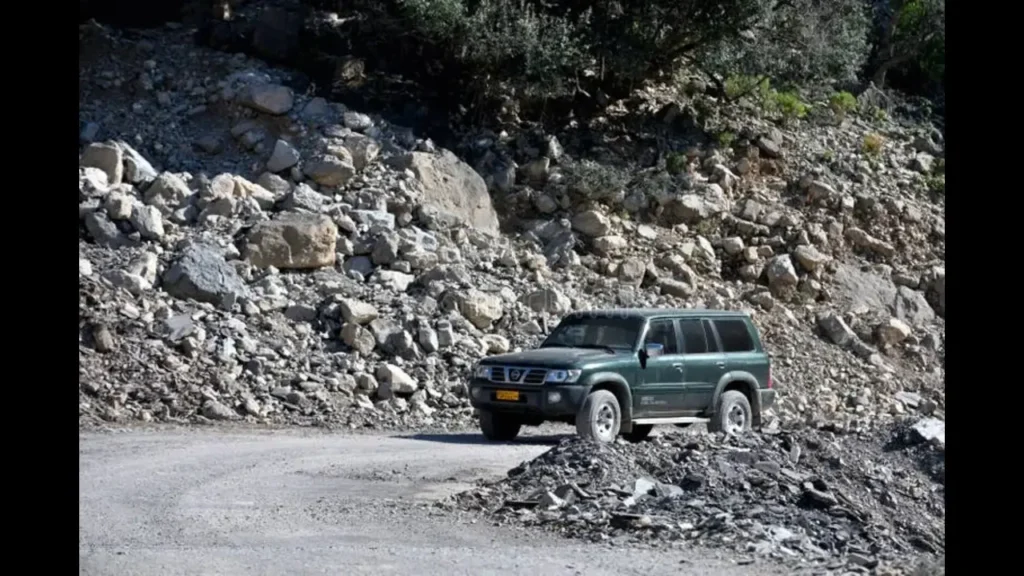
Key 4×4 Technical Checkpoints for Used Vehicles
Before purchasing any used 4×4 in Oman, a technical inspection should go beyond visual appeal and mileage. The vehicle’s 4WD system, suspension geometry, and underbody integrity determine its actual readiness for off-road performance.
The drivetrain is the first checkpoint. A proper 4×4 allows manual selection between 4H (high range) and 4L (low range). Testing these modes during inspection reveals if the transfer case engages smoothly and without grinding noise. Differential locks, when available, should activate consistently; any delay or failure indicates possible actuator wear or wiring corrosion.
The suspension system often tells the story of past usage. Bent control arms, leaking shock absorbers, or cracked bushings suggest heavy off-road work. The same applies to the undercarriage—scratches on skid plates and frame members indicate repeated contact with rocks or sand dunes. While minor marks are expected, structural dents or rust near weld points warrant caution.
Engine and transmission health are equally critical in Oman’s heat. Sand can infiltrate filters and radiators, leading to overheating or early wear. Checking cooling efficiency, oil color, and gearbox responsiveness helps identify vehicles that have endured harsh desert conditions without proper maintenance.
Tyres, wheels, and brakes should also be inspected for uneven wear. Off-road driving often leads to misalignment, and replacements can be costly. Buyers should verify that tyre sizes and types match manufacturer specifications to ensure road stability.
Modifications deserve special attention. Lift kits, snorkels, and winches may add capability but can also affect reliability if installed poorly. A professional inspection can determine whether modifications were done with appropriate reinforcement or merely cosmetic intent.
A used 4×4 in Oman that passes these checks demonstrates not just strength but resilience—qualities essential for any vehicle expected to navigate both Muscat’s roads and Oman’s wilderness safely.
Terrain-Driven Buying Considerations in Oman
Every part of Oman challenges vehicles differently. Understanding how the country’s landscapes interact with 4×4 engineering helps buyers select models suited to their intended use rather than relying on appearance or reputation alone.
In the desert, vehicles face soft sand, constant vibration, and intense heat. True 4×4 systems with selectable low range, strong torque output, and wide-profile tyres perform best in these conditions. Dune driving at Wahiba Sands, for example, demands vehicles such as the Land Cruiser or Patrol with manual traction control override and reliable cooling systems. Automatic all-wheel-drive SUVs often overheat or lose traction in deep sand because their systems are tuned for snow or gravel, not powder-fine desert surfaces.
Mountain routes like Jebel Akhdar or Wadi Bani Awf introduce a different challenge. The terrain is rocky, steep, and uneven, requiring short wheelbases, high ground clearance, and excellent engine braking. Models with low-range gearing and differential locks manage steep descents more safely. A vehicle that thrives in dunes might struggle here if suspension articulation is limited or underbody protection is weak.
Wadi crossings combine both extremes. Water exposure, mud, and sudden terrain changes can stress seals and suspension components. For such mixed driving, pickup-style 4×4s like the Toyota Hilux or Isuzu D-Max offer balance between practicality and endurance.
For daily commuting that occasionally includes off-road trips, comfort and efficiency become equally important. SUVs with part-time 4×4 systems allow normal two-wheel drive for city roads while engaging full traction only when necessary.
Choosing the right vehicle begins by matching these terrain profiles with actual driving habits. Understanding whether the 4×4 will spend 80 percent of its life on asphalt or climbing dunes prevents both overspending and under-performance. It also helps anticipate future maintenance costs tied to the type of terrain most often encountered.
Inspection & History Verification Specific to 4×4 Off-Road Vehicles
Verifying a 4×4’s background is essential in Oman, where many vehicles see both city use and demanding off-road activity. A proper inspection involves mechanical evaluation and documentary verification to confirm service integrity and legal status.
Service records provide the first layer of evidence. Consistent maintenance intervals, logged through authorised workshops, indicate responsible ownership. Gaps in service dates may suggest periods of heavy off-road use without adequate maintenance. Mileage should align logically with the vehicle’s age and service entries; unusually low readings on visibly worn interiors may point to odometer rollback.
Visual inspection reveals what paperwork cannot. Underneath the vehicle, corrosion, oil leaks, and sand accumulation around axles or suspension joints are common signs of desert driving. Cracks on skid plates or non-original welds indicate repair from past off-road impacts. Buyers should also look for mismatched paint or panels that might conceal accident damage.
Water damage deserves special attention because wadis can flood suddenly. Rust near door seals, damp carpeting, or electrical corrosion under seats are warning indicators. Electronic sensors in modern 4×4 systems are particularly vulnerable to moisture and can be expensive to replace.
Import and specification checks ensure the vehicle is suited for Oman’s environment. GCC-spec cars feature enhanced cooling and dust filtration systems. Verifying chassis numbers through official databases or with the Royal Oman Police confirms whether the vehicle was imported legally and if any fines or liens exist.
Dealership inspection programs, such as Sandan’s certified evaluations, add another layer of confidence. These assessments typically include mechanical checks, diagnostic scans, and verified documentation. For used 4×4s—where condition can vary dramatically—such structured verification reduces risk and supports fair pricing.
A transparent history and verified technical status often matter more than mileage alone. Vehicles with proven maintenance records tend to withstand Oman’s demanding conditions longer and retain higher resale value.
Total Cost of Ownership for Used 4×4 Vehicles in Oman
Owning a 4×4 in Oman carries higher running costs than a standard sedan, and understanding these expenses helps prevent budget surprises. Maintenance, insurance, and fuel consumption differ significantly depending on the vehicle’s design and how frequently it is used off-road.
Maintenance costs scale with complexity. Vehicles featuring advanced 4WD systems or air suspension require specialist service, while simpler setups on models like the Hilux or Pajero are easier and cheaper to maintain. Suspension bushings, brake pads, and cooling components wear faster due to heat and off-road vibration. Regular inspection of drivetrain seals and joints is essential to avoid costly failures.
Tyres are a recurring expense. Off-road tyres provide traction in dunes or rocky terrain but wear quickly on asphalt. Rotating them every 10,000 km and keeping pressures adjusted for conditions extends their lifespan. Replacement costs vary from 40 to 80 OMR per tyre depending on brand and size.
Insurance premiums are typically higher for 4×4 vehicles, especially if the policy covers off-road use. Comprehensive coverage that includes desert or wadi driving is advisable for those who explore remote areas. Buyers should confirm whether modifications—such as lift kits or winches—affect insurance validity.
Fuel consumption is another factor. Large-engine petrol 4×4s consume nearly double the fuel of smaller SUVs. Diesel options may save costs but require attention to local fuel availability and servicing expertise.
Beyond direct expenses, ownership also involves preventive maintenance. Regular cleaning of undercarriage components to remove sand, timely oil changes, and inspection of air filters prevent early degradation.
A well-maintained 4×4 may cost more to run, but it retains reliability and resale value. Budgeting realistically for these expenses ensures the investment remains practical and enjoyable within Oman’s demanding driving environment.
Financing, Insurance & Transfer Process for Used 4×4 in Oman
Purchasing a used 4×4 in Oman involves more than choosing a vehicle; it requires understanding how financing, insurance, and legal transfer procedures work. Each step contributes to a secure transaction and long-term ownership stability.
Financing options in Oman cater to both private buyers and small business owners. Local banks and Islamic finance institutions offer vehicle loans with terms ranging from 12 to 60 months. Interest rates vary by model year, loan-to-value ratio, and credit score. For off-road vehicles, lenders may request higher down payments due to depreciation risks. Buyers should compare Murabaha (Islamic financing) and standard interest-based loans to identify the most affordable plan. Loan approvals are usually faster for vehicles purchased through established dealers like Sandan, as verified documentation and pre-inspection reports reduce lender risk.
Insurance is another crucial element. Comprehensive coverage is strongly recommended for 4×4 owners because standard third-party policies exclude off-road damage. Insurers often classify off-road use as high-risk, requiring riders or add-ons for dune and wadi driving. Drivers should confirm whether recovery costs and flood-related damage are covered, as both are common in Oman’s terrain. Some insurers offer tailored 4×4 packages that include roadside assistance in remote areas.
The transfer process is regulated by the Royal Oman Police (ROP). Buyers must complete ownership transfer at an approved inspection center after verifying that all traffic fines are cleared. The ROP also checks that chassis and engine numbers match registration details. Vehicles with modifications, such as lift kits or engine swaps, may require additional inspection to ensure compliance with Omani safety regulations.
Using trusted marketplaces simplifies these procedures. Sandan, for example, facilitates transfers through verified documentation and vehicle reports, reducing administrative delays. Completing all paperwork before payment finalization protects both parties and ensures the vehicle is legally registered under the new owner without pending liabilities.
A methodical approach to financing, insurance, and transfer not only safeguards the transaction but also determines the long-term cost and peace of mind for used 4×4 buyers in Oman.
FAQs – Addressing Common Buyer Questions
Is an AWD SUV enough for Oman’s wadis and desert?
All-wheel-drive SUVs can handle light gravel or paved inclines but often struggle in deep sand or rocky trails. True 4×4 systems with low-range gearing and differential locks are essential for Oman’s dunes and steep wadis.
How many kilometres are acceptable for a used 4×4?
Condition matters more than mileage. Well-maintained 4×4 vehicles in Oman can exceed 250,000 km if serviced regularly. However, signs of heavy off-road wear or incomplete maintenance records should lower valuation.
Do modifications affect resale value?
Functional upgrades such as quality snorkels or reinforced bumpers may appeal to off-road enthusiasts. Poorly installed lift kits or electrical accessories often reduce resale value due to inspection or insurance complications.
Does off-road use void warranties or inspection guarantees?
Dealer warranties, including Sandan’s certified programs, typically cover normal use. Continuous heavy off-road driving may shorten coverage if damage results from misuse. Buyers should confirm coverage terms before signing.
What extra insurance coverage is required for desert driving?
Comprehensive insurance with off-road and flood damage clauses is recommended. Some providers also offer recovery services for stranded vehicles in desert or wadi areas.
Is it better to buy privately or through a certified dealer?
Certified dealers provide verified inspection reports, service history, and transparent transfer procedures. While private sellers may offer lower prices, certified listings minimize legal and mechanical risks—especially for vehicles with prior off-road exposure.
Conclusion – Making the Right Call When Buying a Used 4×4 in Oman
Purchasing a used 4×4 in Oman is a decision shaped by terrain, purpose, and long-term practicality. The country’s roads and off-road routes demand vehicles built for endurance, not just appearance. A well-chosen 4×4 can last for years if its technical integrity matches the driving environment—whether that means daily commutes across Muscat or weekends spent exploring desert dunes and mountain passes.
Success in this market comes down to knowledge and verification. Buyers who understand drivetrain mechanics, inspection priorities, and local regulations gain a clear advantage. Evaluating service history, identifying genuine GCC specifications, and testing all 4WD modes protect against unexpected expenses. The financial aspects—insurance coverage, loan terms, and transfer documentation—complete the process, ensuring a smooth transition from selection to ownership.
Certified marketplaces such as Sandan Oman simplify these steps through structured inspections and transparent records. Their verified listings allow buyers to focus on finding a vehicle suited to their driving needs rather than worrying about mechanical uncertainty. For those who value reliability in Oman’s challenging conditions, this assurance is often the deciding factor.
Choosing the right used 4×4 ultimately means balancing aspiration with awareness. The most dependable vehicles are not always the newest or most expensive—they are the ones maintained with discipline and matched precisely to the environment they serve. By approaching the purchase methodically, buyers secure more than transport; they gain freedom to explore Oman safely and confidently, on-road and beyond.




